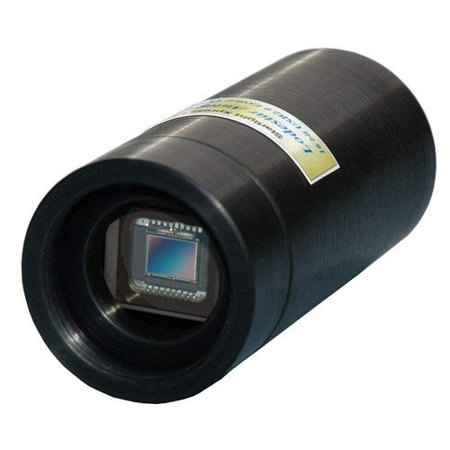
This item is no longer available.
Review Summary
2018-01-23T07:47:56
I was using a QHY5L-II CMOS design guide camera with success on a guide scope. I recently acquired an ONAG - on axis guider - that uses infrared light for guiding. The CMOS camera worked ok but I decided to try a Lodestar since it is widely regarded as an excellent guide camera and it performs well in infrared. It also is a CCD design which will allow hardware binning to make a 2x2 (or more) pixel for brighter stars. This has worked very well. Infrared light is not affected as much by the atmosphere so my guiding with the Lodestar and ONAG has really improved.
Randall S.
2017-12-11T08:01:43
I don't have a cdrom drive on my latop so I went to download the drivers. VERY CONFUSING (product names and models I had lots of confusion until I the driver off the cd that came with it and sent the files over the network to my laptop. Camera replaces a ASI290mm. I get much brighter stars and no more star mass - star lost errors. Thre is a reason is the most used guide camera out there. What was cool was Adorama had about 100. less on their price than everyone else? So great product and price.
RON K.
2017-07-28T13:51:50
I also use the camera for EAA along with Starlight Live. It's a very sensitive camera. The file size is small but the image quality is good. Along with a Starlight Xpress USB filter wheel, I can do near live narrowband imaging in various palletes (e.g. SHO or HOO).
Robert J.
2017-07-12T00:23:37
The camera is much more sensitive than the SSAG, and necessary for an off axis guider. Documentation could use a little work as the install instructions don't seem to match reality, but nothing serious
Richard G.
2017-07-11T12:02:24
Great camera, wish I had upgrades to this earlier.
Nathan W.
2017-05-24T12:28:20
I don't use this as an autoguider, but I might use it for that if I get the bug for astrophotography. I use it for EAA or Electronically Assisted Astronomy. It allows you to see much more detail in faint deep sky objects like galaxies than you would in an eyepiece in near real-time. This camera is not for solar system imaging like the planets, moon or sun. The attached image is the galaxy M51 from a suburb on the edge of a red zone for light pollution. A .5x focal reducer was used speed up the optics and get a larger field of view. The telescope used was a 5 inch or 127mm Maksutov. No post processing done just on the fly stacks
Brian D.
2017-02-11T15:33:38
The Lodestar X2 does not look compatible with my Orion Starshoot autoguide scope. Apparently I would need an extension about 1" in back of the guide scope to get the sensor in the proper focal plane. Haven't seen anything available. Please let me know I there's anything available for this. Thanks
richard S.
ICX829AL Sony Exview interline CCD with very low dark current and vertical anti-blooming
Pixel size: 8.2uM x 8.4uM
Image format: 752 x 580 pixels
(H x V): 6.4 x 4.75mm
Grade 1
QE max at 620nM (-77%), 45% at 400nM and 770nM
Less than 10 electrons RMS - typically only 6 electrons
Greater than 50000 e- (unbinned)
Overload margin greater than 1000x
Dark frame saturation time greater than 1 hour. Less than 0.1 electrons/second at + 10C ambient
16 bits
0.4 electrons per ADU
Built-in USB 2.0 compatible interface
Typically 0.2 seconds at full resolution using USB 2.0
USB powered
Ambient air cooling
32 x 86mm / 1.26 x 3.39" black anodized aluminum barrel with 1" x 32tpi 'C mount' thread at the CCD window end & input/output plugs at rear
Approx. 85g / 3.00oz
5060348840930
great camera and price
By RON K.
I don't have a cdrom drive on my latop so I went to download the drivers. VERY CONFUSING (product names and models I had lots of confusion until I the driver off the cd that came with it and sent the files over the network to my laptop. Camera replaces a ASI290mm. I get much brighter stars and no more star mass - star lost errors. Thre is a reason is the most used guide camera out there. What was cool was Adorama had about 100. less on their price than everyone else? So great product and ...
View full Review
Lodestar CCD Guider allows hardware binning for brighter, stable guide stars
By Randall S.
I was using a QHY5L-II CMOS design guide camera with success on a guide scope. I recently acquired an ONAG - on axis guider - that uses infrared light for guiding. The CMOS camera worked ok but I decided to try a Lodestar since it is widely regarded as an excellent guide camera and it performs well in infrared. It also is a CCD design which will allow hardware binning to make a 2x2 (or more) pixel for brighter stars. This has worked very well. Infrared light is not affected as much by the atm...
View full Review
The Lodestar X2 is an upgraded version of the very popular Lodestar autoguider. The original Lodestar uses the ICX429 Exview chip from Sony and offers excellent sensitivity. However, Sony have now upgraded the ICX429 to the ICX829, with considerably improved QE and read noise. This new 'Exview 2' chip approximately doubles the Lodestar sensitivity and adds nearly a full star magnitude to the minimum guide star brightness. They have also redesigned the boards so that a standard RJ12 guide socket can be used. This will please many users who have found the small 'ZH' cable socket to be too delicate.